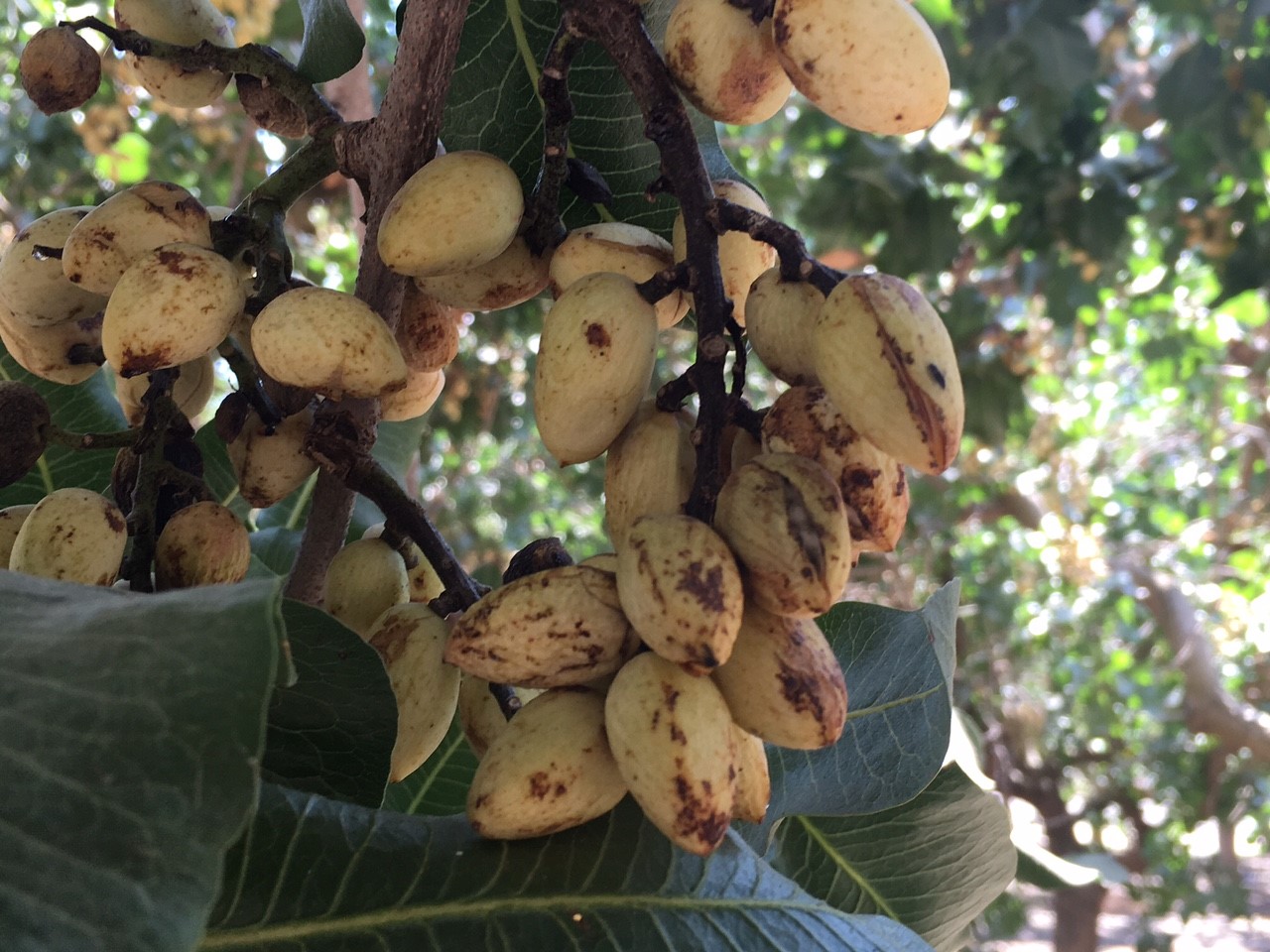
Citrus flat mite damage in pistachio production can be confused with Botryosphaeria, but flat mite does not cause gumming or blackening of the cluster like a BOT infection.
Themis J. Michailides, plant pathologist at the UC Kearney Agriculture Research and Extension Center, said this pest causes black blotches on the rachis of pistachio. This is where the mite feeds. The black blotches are very superficial and can be removed by scraping. Small, uneven lesions can also develop on the epicarp and can easily be scraped off. These symptoms develop in the spring, Michailides said, and if conditions are favorable for the Botryosphaeria fungal disease, symptoms on the fruit and rachis can be confused with those produced by citrus flat mite.
The black lesions caused by BOT cannot be scraped off, as they are deep in the plant tissues of the rachis and the fruit epicarp. Also, lesions caused by BOT are round and their surface is smooth, while those caused by the citrus flat mite have a ‘scabby’ surface.
Michailides said that later in the season when infestations by the mite are severe, the excessive feeding by them on the rachis results in killing entire clusters. The killing of the clusters can be confused with the killing by a BOT infection. To distinguish, he advised, make a cross section of the rachis. The rachis of the cluster recently killed by citrus flat mite is green internally while the cross section of a cluster infected by BOT is dark brown. If the killed clusters are dried, those killed by citrus flat mite feeding will be lighter than those killed by BOT.
According to UC IPM guidelines, heavy populations of citrus flat mite in an orchard will cause nuts to shrivel and remain on the tree where they can provide an overwintering source for navel orangeworm.
Citrus flat mites are smaller than tetranychid (spider) mites. This pest is slow-moving, flat and oblong in shape, being wider at the anterior end. Coloring ranges from red-brown to reddish.
Citrus flat mite is a warm-season pest with populations increasing in June and peaking in late July and August, then gradually declining.
A predaceous phytoseiid mite, Metaseiulus mcgregori, which is common in several crops throughout California, feeds on citrus flat mite. Its numbers begin increasing in August and reach their highest level at the same time as citrus flat mite, but experience has shown that their numbers are insufficient to reduce flat mite populations below economic injurious levels.
Prior to harvest, monitoring for flat mite damage to nut clusters is advised.












